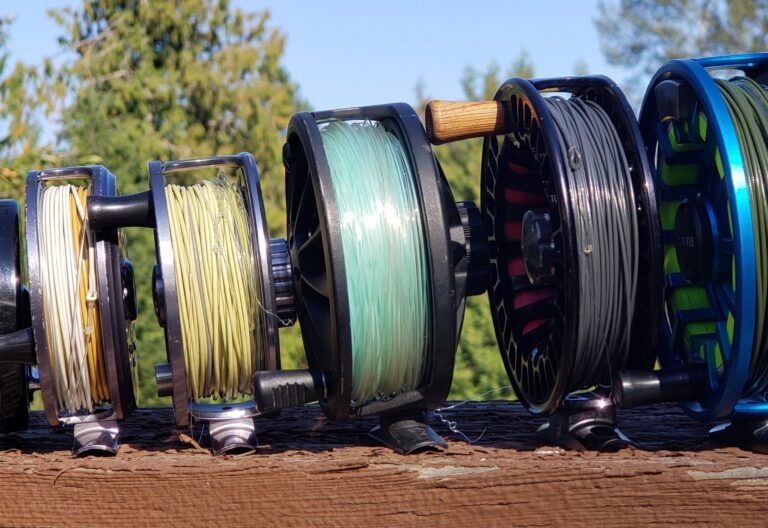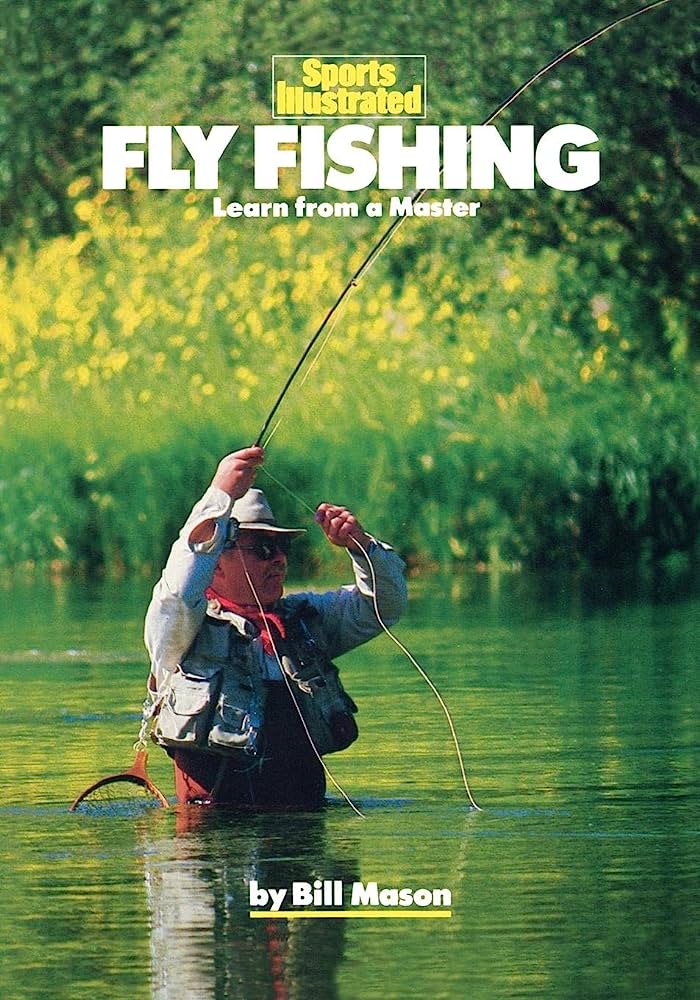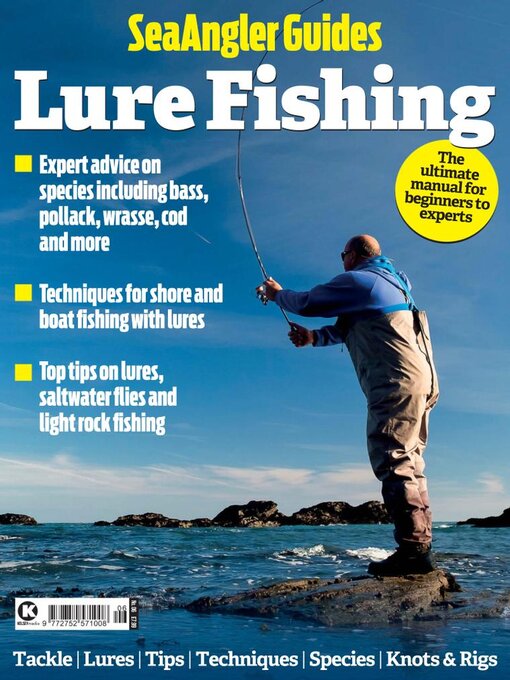When selecting a fly fishing reel, important factors to consider include the size of the reel, the type of fish being targeted, the weight and balance of the reel, and the type of line being used. These factors will determine the efficiency and effectiveness of the reel in various fishing conditions, ensuring a successful and enjoyable fly fishing experience.
Whether it be for freshwater or saltwater fishing, a lightweight reel with a smooth drag system, sturdy construction, and a large arbor design will provide the necessary support and control when reeling in your catch. The selection of the right fly fishing reel is crucial to enhance your overall performance and maximize your chances of success on the water.

Credit: www.askaboutflyfishing.com
Why The Right Fly Fishing Reel Matters
Understanding The Importance Of A Well-Chosen Fly Fishing Reel
Choosing the right fly fishing reel is a crucial decision that can greatly impact your overall fishing experience. A well-chosen reel can make a significant difference in terms of casting, line control, and landing fish. Here are some key points to consider:
- Durability: A high-quality reel is built to withstand the rigors of fly fishing, ensuring it will last for years to come. This means it can handle the pressure of reeling in large fish without warping or breaking.
- Smooth retrieval: A quality reel will have a smooth and consistent retrieval system, allowing you to reel in your catch effortlessly. This ensures that you can maintain constant tension on the line, preventing any sudden jerks that may cause the fish to break loose.
- Drag system: The drag system of a fly fishing reel is crucial for controlling the movement of a hooked fish. It allows you to adjust the amount of resistance applied to the fish, preventing it from breaking the line. A well-designed drag system provides a balance between smooth operation and strong stopping power.
- Weight and balance: The weight and balance of a reel play a significant role in the overall feel and performance of your fly rod. A well-matched reel will complement your rod, preserving its natural balance and making it easier to cast accurately.
How A Quality Reel Can Enhance Your Fly Fishing Experience
Investing in a high-quality fly fishing reel can greatly enhance your overall fly fishing experience. Here are a few ways a quality reel can make a difference:
- Improved casting distance and accuracy: A good reel ensures consistent and smooth line release, allowing for better control and longer casts. This means you can reach fish that may be beyond the reach of an inferior reel.
- Reduced line tangles: A quality reel typically features an efficient line retrieval system, minimizing line tangles and snags. This saves valuable fishing time and reduces frustration on the water.
- Increased line capacity: Higher-end reels often offer larger line capacities, enabling you to carry more backing or different types of fly lines. This versatility can be particularly useful in different fishing scenarios or when targeting different species.
- Better line control: A top-notch reel provides precise control over the line, allowing for delicate presentations and accurate targeting of feeding fish. This level of control can make all the difference in fooling even the most wary trout.
The Impact Of Reel Selection On Casting, Line Control, And Landing Fish
Selecting the right fly fishing reel has a direct impact on casting, line control, and the ability to land fish successfully. Consider the following:
- Casting: A proper reel weight and balance contribute to a smooth casting stroke, enhancing accuracy and distance. An ideal reel will complement your casting style, providing the desired feel and responsiveness.
- Line control: A quality reel with a well-designed drag system allows for precise line control, especially when playing a fish. It enables you to smoothly and effortlessly manage the tension on the line, avoiding sudden breaks or line slippage.
- Landing fish: The durability and strength of a reel play a crucial role when landing a fish. A reliable reel can handle the tension of a strong fish, providing the necessary stopping power to tire and bring the fish to net or hand.
Overall, choosing the right fly fishing reel is an essential aspect of maximizing your enjoyment and success on the water. Investing in a high-quality reel ensures durability, smooth retrieval, and enhanced line control, ultimately translating into more successful and fulfilling fishing experiences.
Key Factors To Consider When Choosing A Fly Fishing Reel
Reel Size And Weight
When selecting a fly fishing reel, it is crucial to consider the size and weight of the reel. Here are the key points to keep in mind:
- Optimal size and weight: The size and weight of the reel play a vital role in determining its performance in different fishing scenarios. It is important to match the reel to your fly rod to achieve balanced performance.
- Balanced performance: Selecting a reel that is too heavy or too light for your fly rod can lead to imbalanced performance. A reel that is too heavy may cause the rod to feel clunky and impact your ability to cast with precision. On the other hand, a reel that is too light might not provide enough line control and stability.
- Consider fishing scenarios: Depending on the fishing scenarios you plan to encounter, the reel size and weight may vary. For example, if you are fishing in small, tight streams, a lightweight and compact reel may be more suitable. For larger bodies of water or when targeting bigger fish, a larger reel with more line capacity and a stronger drag system may be necessary.
Drag System
The drag system is a crucial element of any fly fishing reel. Here are the key points to consider when evaluating different drag systems:
- Types of drag systems: Fly reels typically feature either a click and pawl drag system or a disc drag system. The click and pawl drag system provides a vintage feel and is suitable for small to medium-sized fish. Disc drag systems, on the other hand, offer more precise and adjustable drag capabilities, making them ideal for larger, faster fish species.
- Fishing conditions: The type of drag system you choose should be based on the specific fishing conditions you expect to encounter. If you plan to target aggressive fish that make strong runs, a disc drag system with a smooth and powerful drag adjustment will be more reliable. For situations where delicacy is required, such as when fishing for trouts, a click and pawl drag system may be sufficient.
- Adjustability and smoothness: When considering the drag system, it’s important to assess its adjustability and smoothness. A good drag system should allow for precise adjustments to handle varying conditions and fish species. Smoothness is vital to prevent sudden jerks or breaks in the line when the fish makes sudden movements.
Construction Materials
The choice of construction materials used in the fly fishing reel can significantly impact its durability, weight, and overall performance. Here are the key points to understand:
- Benefits and drawbacks: Different materials such as aluminum, graphite, and composite materials each have their unique advantages and disadvantages. Aluminum reels are known for their durability and strength but may be heavier compared to graphite. Graphite reels are lighter but may sacrifice some durability. Composite materials provide a combination of traits from both aluminum and graphite.
- Durability: The material used in the reel construction directly influences its durability. If you frequently fish in rugged environments or target powerful fish, opting for a reel with sturdy construction materials is essential to withstand the challenges.
- Weight considerations: The weight of the reel can impact casting ease and fatigue during long fishing sessions. Lighter materials like graphite can reduce the overall weight of the reel, making it more comfortable to handle. However, it is important to strike a balance between weight and other factors like durability and the type of fishing scenarios you anticipate.
By considering these key factors – reel size and weight, drag system, and construction materials – you can make an informed decision when choosing a fly fishing reel. Remember, finding the right reel that suits your fishing style and preferences will ultimately enhance your overall fly fishing experience.
Happy fishing!
Expert Tips For Fly Fishing Reel Selection
Assessing Fishing Style And Target Species
When it comes to selecting a fly fishing reel, it is crucial to assess your fishing style and the target species you will be pursuing. This information will help you choose a reel that is perfectly suited to your specific fly fishing needs.
Here are some key points to consider:
- Evaluate your preferred fishing techniques: Determine whether you will be utilizing dry flies, nymphs, or streamers. Each technique requires a different type of reel, so it’s important to select one that aligns with your fishing style.
- Consider your target fish species: Different fish species have varying size and strength, which directly impacts the reel’s drag system requirements. Ensure you choose a reel capable of handling the fish you intend to catch.
Budget Considerations
While the quality and performance features of a fly fishing reel are important, it is equally crucial to stay within your budget. Here are some factors to keep in mind when considering your budget:
- Balance price with quality: While it’s tempting to opt for the cheapest reel available, it may not deliver the desired performance or durability. Strive to strike a balance between price and quality to ensure you get the most value for your money.
- Identify reel options within your budget: Research and explore different reel options that fall within your budget constraints. By setting a clear budget range, you can focus your search on reels that offer the best features and performance within that specific price range.
Seeking Professional Advice
Harnessing the expertise of experienced fly fishing guides or experts can greatly enhance your reel selection process. Here are some tips for seeking professional advice:
- Consult with experienced guides or experts: Reach out to professionals who have extensive knowledge and experience in the fly fishing realm. They can provide invaluable insights and recommendations based on your fishing style, target species, and budget.
- Leverage their knowledge: Ask questions and seek advice on reel options that align with your specific requirements. With their guidance, you can make an informed reel selection that maximizes your chances of success on the water.
Remember, when selecting a fly fishing reel, assessing your fishing style and target species, considering budget constraints, and seeking professional advice are essential factors to ensure you choose a reel that meets your unique needs. With the right reel in hand, your fly fishing adventures are bound to be even more rewarding and enjoyable.
Fly Fishing Reel Maintenance And Care
Proper maintenance and care of your fly fishing reel are essential to ensure its optimal performance and extend its lifespan. By following a few simple steps, you can keep your reel in top condition, ready for your next fishing adventure.
Here are some important factors to consider when it comes to fly fishing reel maintenance and care:
Cleaning And Lubrication
Keeping your fly fishing reel clean and lubricated is vital for smooth operation and to prevent damage caused by dirt and grime buildup. Here are the proper steps for cleaning and lubricating your reel:
- Cleaning: Regularly clean your reel by removing the spool and wiping down the entire reel with a soft cloth or sponge dampened with mild soapy water. Be sure to pay attention to the tight spaces and crevices where dirt can accumulate. Avoid using harsh chemicals or solvents that can damage the reel’s finish.
- Lubrication: Apply a small amount of reel oil or lubricant to the key moving parts of your reel, such as the handle, drag system, and bearings. This will help reduce friction and improve performance. Be mindful not to over-lubricate, as excess oil can attract dirt and debris.
- Maintenance tips: To further extend the lifespan and performance of your reel, consider the following maintenance tips:
- Regularly inspect the drag system and clean or replace any worn or damaged components.
- Avoid exposing your reel to extreme temperatures or prolonged sunlight, as this can cause damage.
- Rinse your reel with freshwater after each use in saltwater environments to prevent corrosion.
Storage And Protection
Proper storage and protection of your fly fishing reel are essential, especially during the off-season or when not in use. By taking necessary precautions, you can prevent damage and maintain the reel’s condition. Consider the following best practices:
- Storing your reel: When storing your reel for an extended period, ensure it is completely dry and free from any debris. Store it in a cool, dry place away from direct sunlight. Consider using a storage case or bag to provide additional protection.
- Protective measures: To prevent damage and corrosion, you can take the following measures:
- Use reel covers or neoprene sleeves to protect your reel from scratches and bumps during transportation.
- Avoid storing your reel near chemicals, strong odors, or other corrosive substances.
- Regularly check for any signs of rust or corrosion and address them promptly.
Regular Inspections
Routine inspections are crucial to identify any signs of wear, damage, or potential issues with your fly fishing reel. Regular maintenance and timely repairs can help prevent major problems down the line. Here’s why regular inspections are important:
- Identifying wear and potential issues: By inspecting your reel regularly, you can:
- Identify worn-out or damaged components that may affect the reel’s performance.
- Check the line for any signs of fraying or weakness.
- Ensure that all screws, bolts, and other fasteners are securely tightened.
- Professional reel servicing: If you notice any of the following signs, it may be time to seek professional reel servicing:
- Excessive noise or grinding during reel operation.
- Drastic decrease in drag performance.
- Frequent line tangles or snags that are not due to user error.
By practicing proper cleaning and lubrication, storing your reel correctly, and conducting regular inspections, you can ensure your fly fishing reel remains in optimal condition for many seasons of successful fishing. Remember, a well-maintained reel not only enhances your fishing experience but also protects your investment.
Conclusion
Choosing the right fly fishing reel requires careful consideration of several important factors. Firstly, the reel’s size and weight should match the type of fishing you plan to do, ensuring optimal performance and comfort. Secondly, the reel’s material and construction should be durable and resilient to withstand the rigors of fishing in different environments.
Thirdly, the reel’s drag system should be smooth and adjustable, allowing you to control the line tension during battles with fish. Additionally, the reel’s retrieval rate and line capacity should be appropriate for the species you intend to target. Lastly, don’t forget to consider your budget and compare different options to find the best reel that offers a good balance of quality and affordability.
By keeping these key factors in mind, you can make an informed decision and find a fly fishing reel that enhances your angling experience for years to come.




